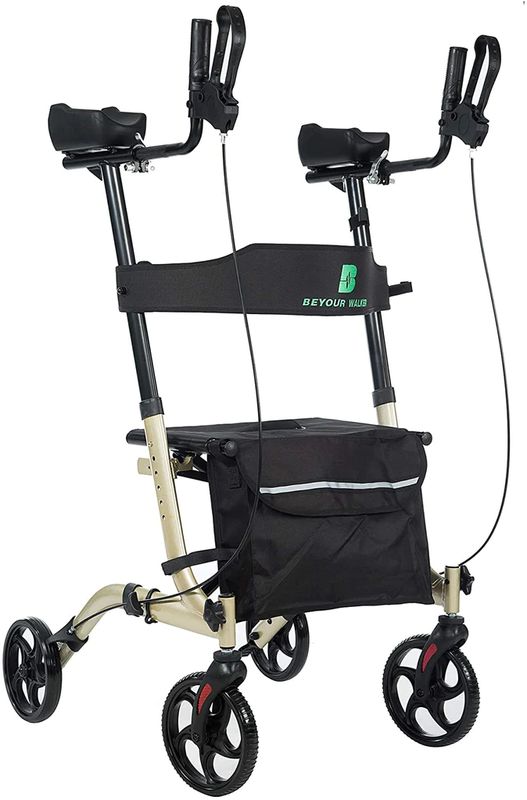
The Advantages of Using Walkers and Crutches
In the face of mobility challenges, the use of walkers and crutches is certainly among the most effective aids. Such a solution grants one a heightened level of independence and comfort in even the most routine daily activities. In this discussion, we shall examine the many benefits that come with the use of walkers and crutches.
Standing Upright with a Walker
Indeed, a walker, with its four legs and accompanying balance, is a keystone of mobility support. This elegant aid has been chosen time and time again by persons of various mobility limitations. From standard walkers to the more attuned two or four-wheeled variants, commonly called rollators, walkers are available in multiple types.
The chief benefit of a walker is its capacity for stability. The wide base provided by the four-legged frame enhances balance and stability while standing or walking, which can be especially advantageous for those prone to experiencing bouts of vertigo or dizziness. Additionally, walkers come in various sizes to accommodate diverse body types and heights. There are also walkers that come fitted with trays and baskets to further enhance the ability for the user to carry objects and not have to sacrifice usage of their hands.
Staying Active with Crutches
Crutches are another viable and effective solution for staying active even with mobility limitations. There are two main types of crutches - underarm crutches and forearm crutches - available to persons with mobility limitations.
Forearm crutches provide support for the user on the forearm, while underarm crutches rest under each armpit of the user. Utilizing crutches, however, requires a modicum of upper body strength. As such, crutches are an excellent choice for individuals who possess sufficient arm strength. For persons who want to remain active even while in recovery from surgery or an injury, crutches can be a godsend. They are also ideal for individuals who require leg weight transferal reduction as would happen after surgeries or foot injuries. Furthermore, crutches are portable, lightweight, and compact. It is adaptable to the user's height, and arm length while also possessing comfortable handgrips and adjustable cuffs, creating an ergonomic design that aids in limiting arm and hand fatigue due to their use.
Choosing the Right Mobility Aid for You
Selecting a suitable mobility aid is a crucial step in one's journey to enhanced mobility. It requires evaluating one's specific mobility challenges while considering the available and most effective solutions. If a particular challenge is that of difficulty maintaining balance or rising from seated positions, a walker is frequently the best tool. In contrast, crutches are more suitable if the user has adequate upper body strength that allows them to remain active while recovering from injuries or surgeries.
Your healthcare provider can provide valuable assistance in picking out the ideal mobility aid by evaluating your needs and matching you with the best possible aid for you. They will also ensure that the crutches or walker is positioned and adjusted appropriately to the user while offering training on safety in usage.
Conclusion
As we have examined, walkers and crutches significantly contribute to improving one's mobility levels. Vital to achieving personal independence, these mobility aides facilitate routine daily activities, empowering persons with mobility limitations. Providing ample support and balance, walkers and crutches enable those with mobility challenges to confidently traverse their environments. Contact your healthcare provider today to learn more about how walkers and crutches can improve your life quality and to help achieve the independence you desire.
